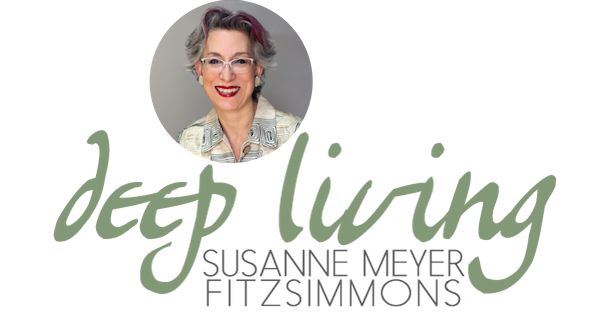 I really get irritated when I walk into a store right behind another person, who does not notice me, does not look back, and does not hold the door for me, so that the door basically flies right in my face. While it is necessary at times to turn inward to ground yourself, you miss what's going on around you when you walk around out of tune, or with music plucked into your ears - besides being an easy target for pickpockets.
A few weeks ago I was awaiting the end of my daughter's dance lesson on the parking lot outside the studio and noticed a dad reading in his big car with the engine idling for the whole hour of the lesson - no awareness of the environmental implications.
I really get irritated when I walk into a store right behind another person, who does not notice me, does not look back, and does not hold the door for me, so that the door basically flies right in my face. While it is necessary at times to turn inward to ground yourself, you miss what's going on around you when you walk around out of tune, or with music plucked into your ears - besides being an easy target for pickpockets.
A few weeks ago I was awaiting the end of my daughter's dance lesson on the parking lot outside the studio and noticed a dad reading in his big car with the engine idling for the whole hour of the lesson - no awareness of the environmental implications.
We awake slowly, gradually, individually, to our own rhythm from this unconsciousness slumber. We all observe it in our own children when we see them growing up, first making the "I-am-connection," then becoming aware of their greater environment (my 12-year-old daughter asked the other day "Mom, what do we actually need Social Studies for when we grow up? - so it takes some time), and then going out into the "real" world. Walking through life awake, with open eyes and ears and mind, in tune with what's going on around, adds depth and complexity to your experience, but is also an indication of a deeper spiritual connection or awareness.
A few days ago I was giving my son one of his first driving lessons - in my very methodical and structured way - and then coached him along as he was slowly practicing. Then he said something like "driving really requires concentration and all 'round awareness." 
Life does in general. When we blindly follow all those thoughts that race through our minds we live in our heads not at the wheel, or holding a door for the next person, or minding the environment and shutting the idling engine. Being awake in the moment is where living happens.
Also take a look at some previous blogposts on mindfulness.








